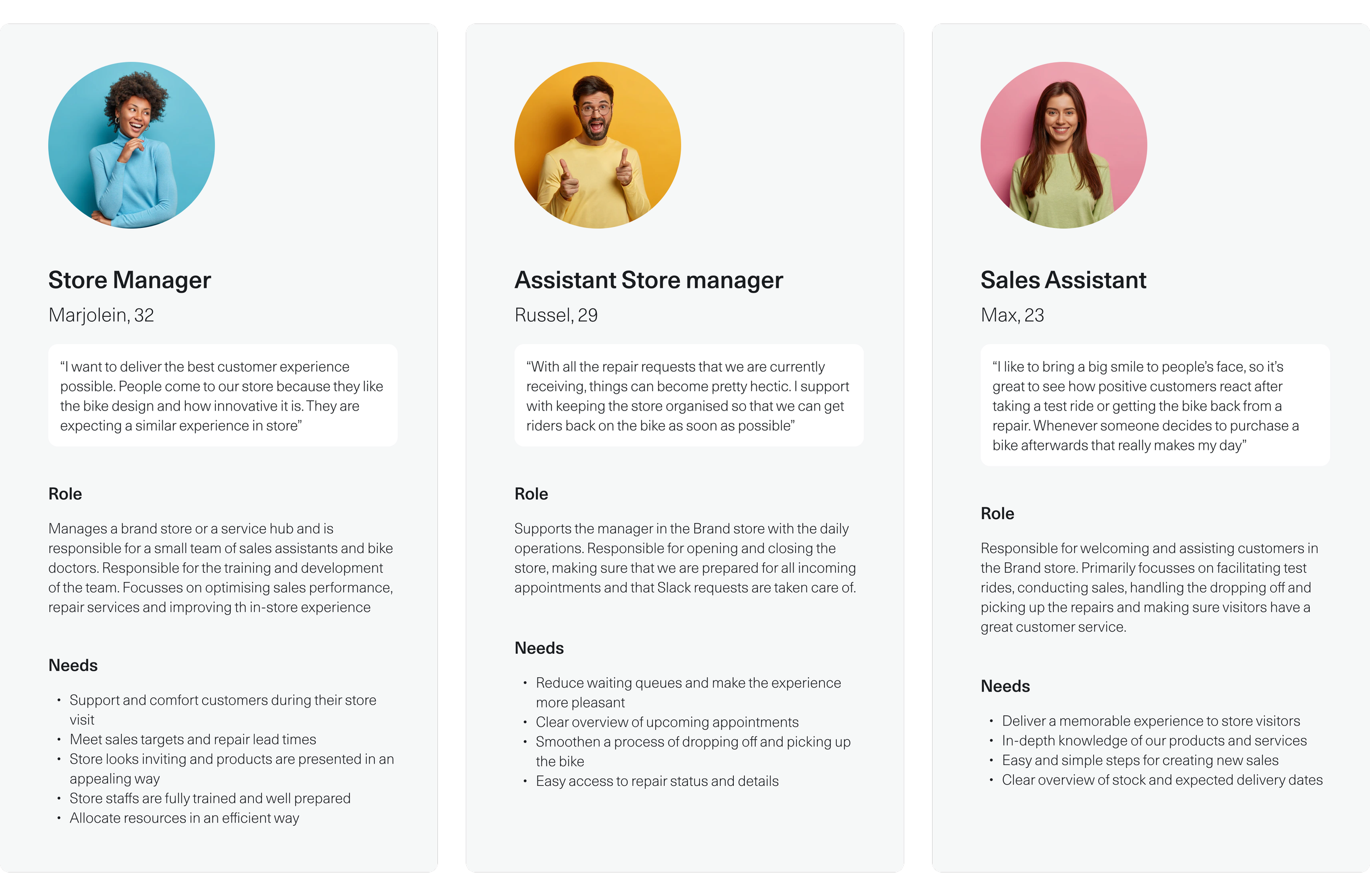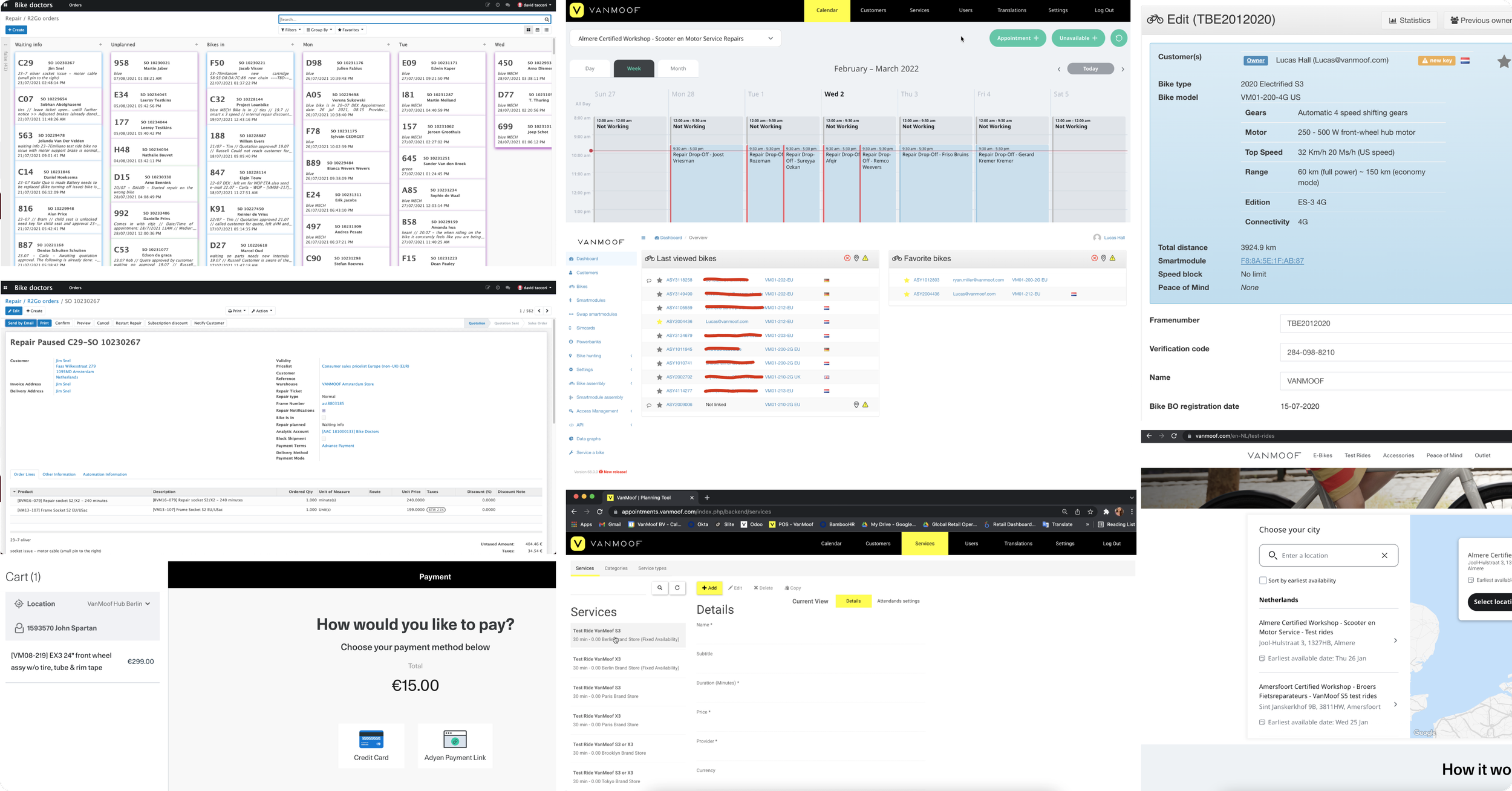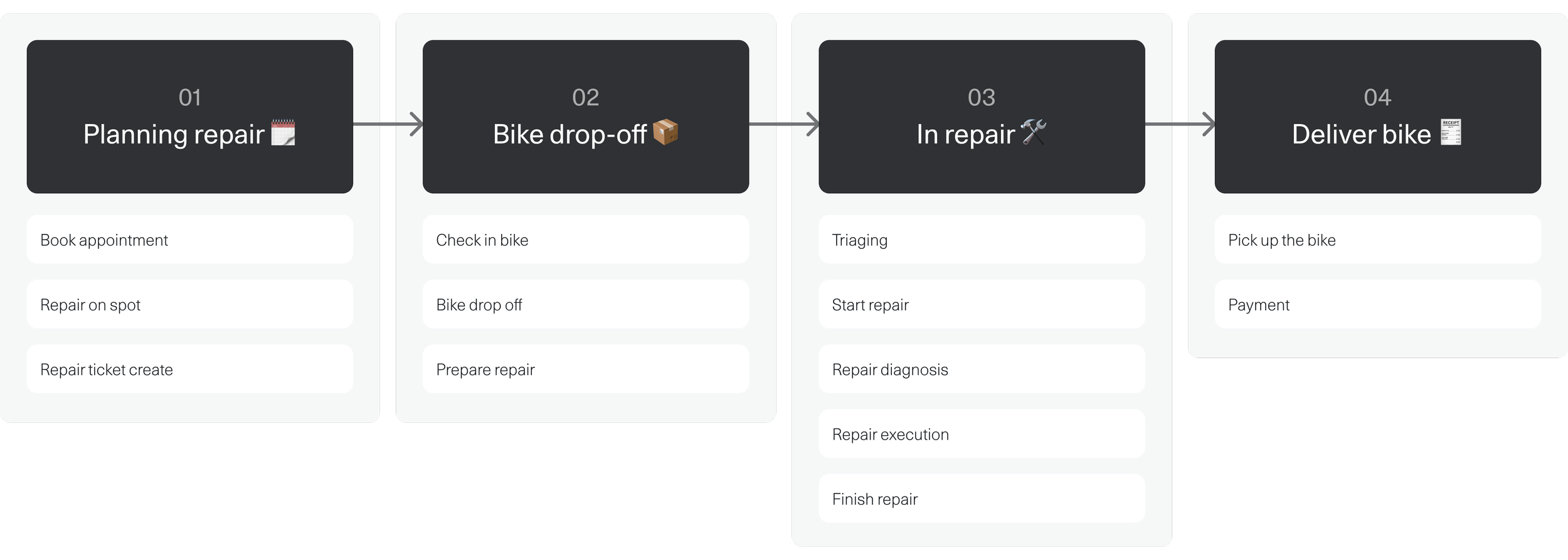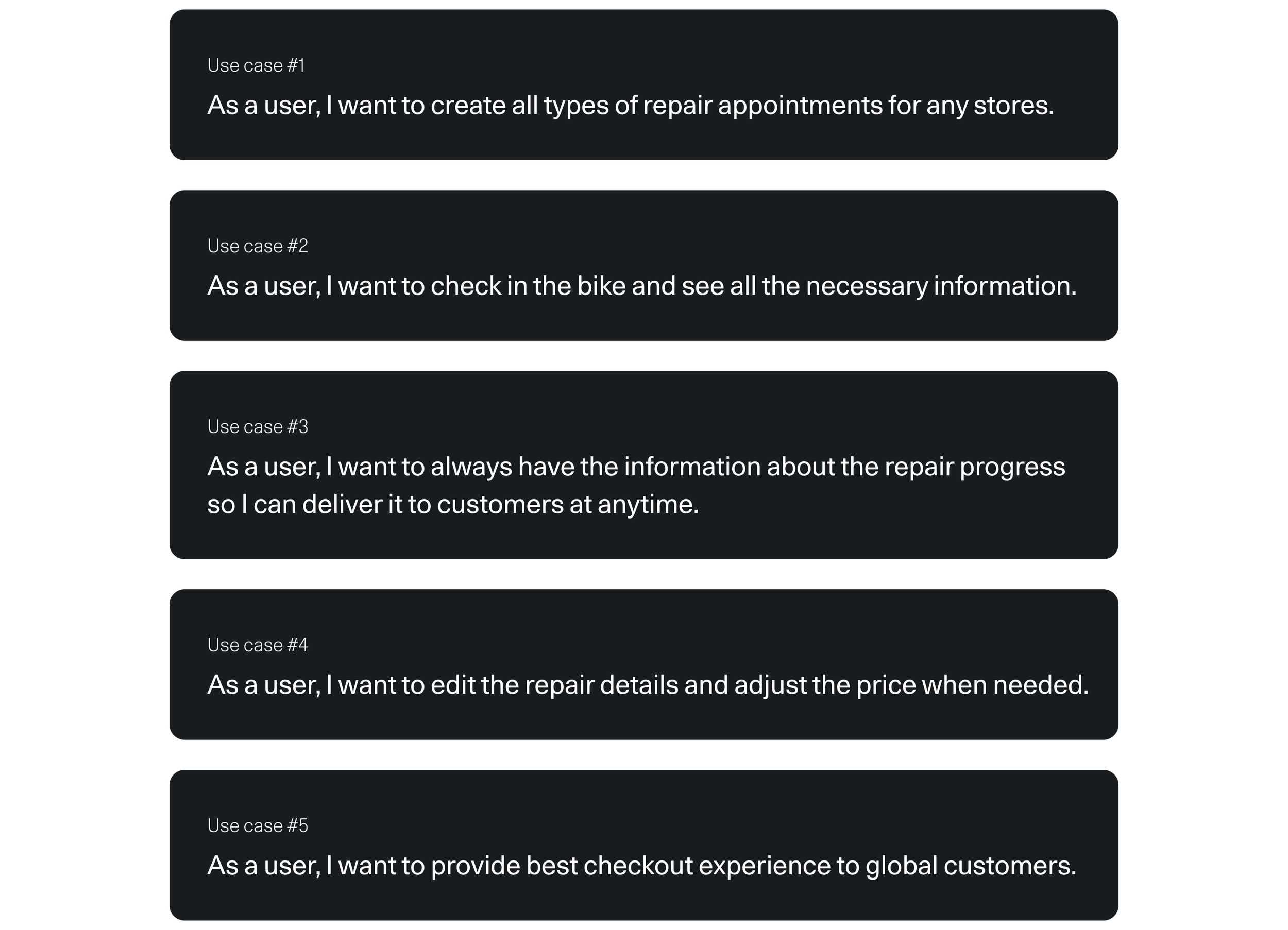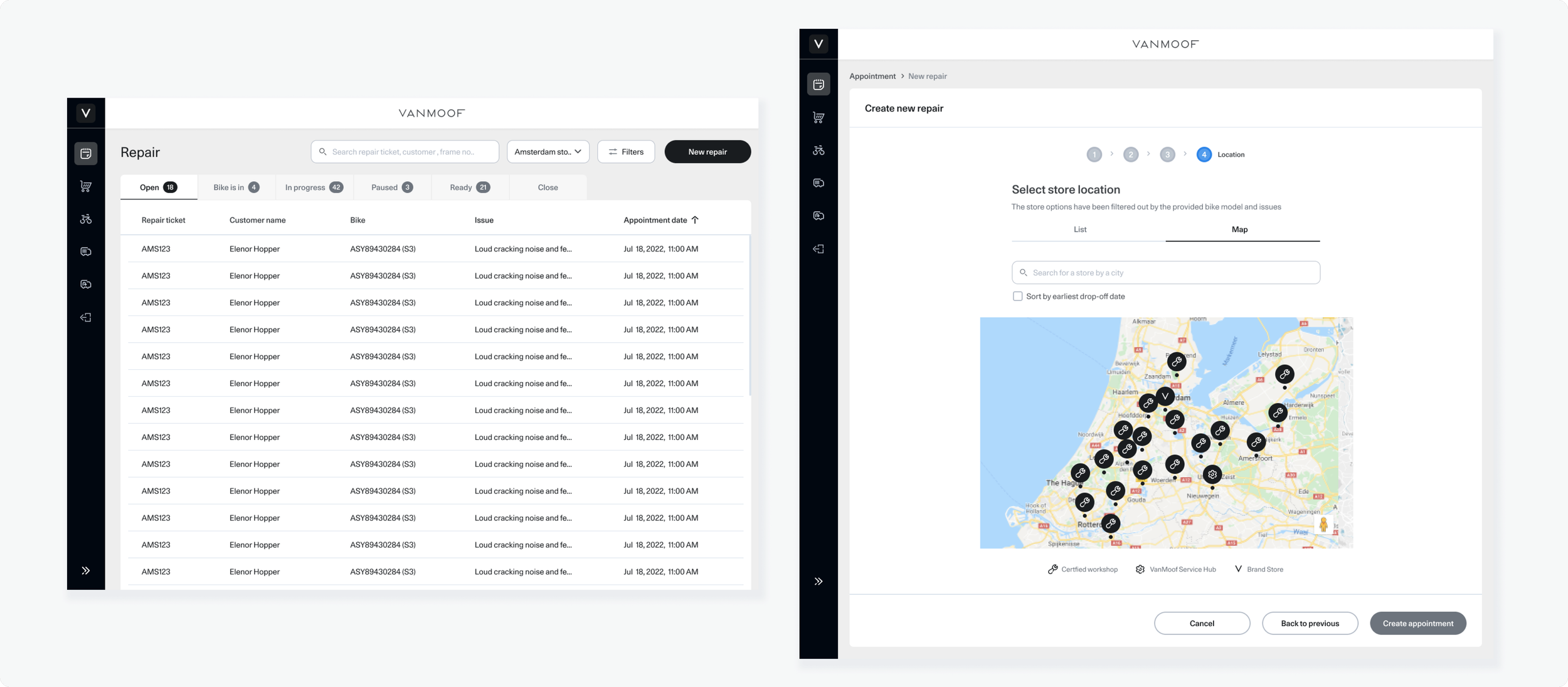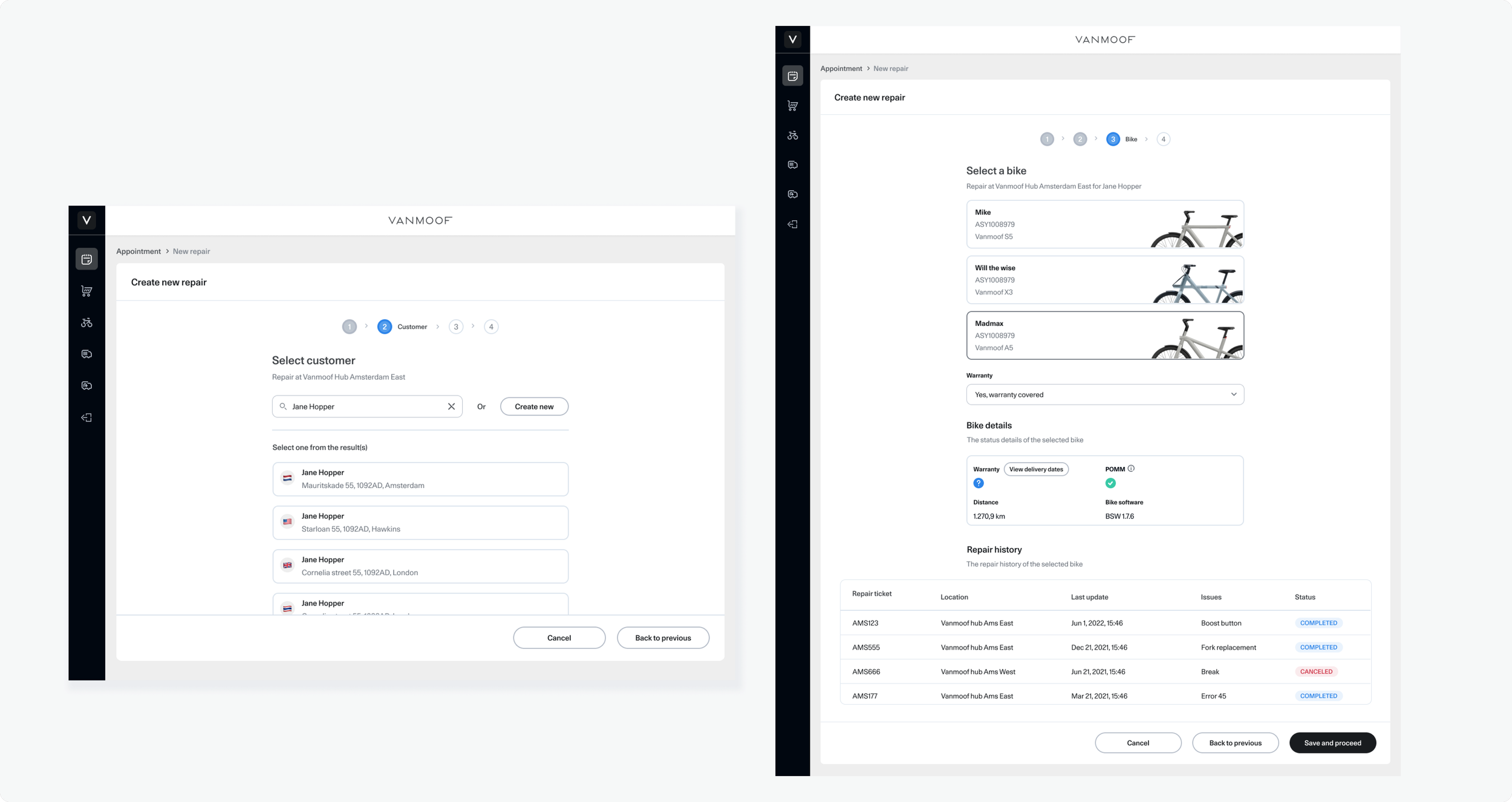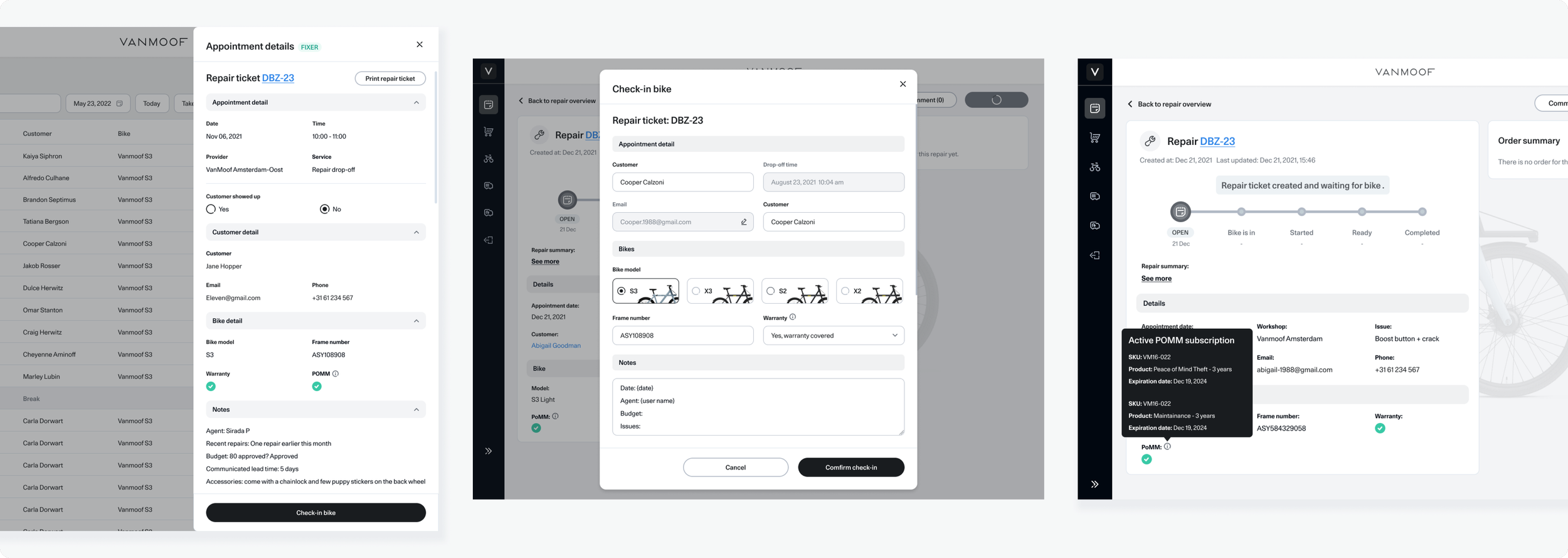Point of service
Product Designer, Nov 2021 - Aug 2022
Context
VanMoof is a global company with people united by one goal: to help people get around their cities faster, smarter, happier, and in the utmost style. VanMoof has repeatedly shaken up the international bike industry with rapid innovations and unconventional solutions. As the company grows, the amount of customer bikes and the demand for bike repairs increase rapidly as well. Repair is the key after-sales service that keeps customer satisfaction high. POS is the main platform for retail users to perform the sales and provide services to customers. However, they need to use many internal tools to support the repair process. This makes the process becomes both time consuming and complex, which also results in customer dissatisfaction.
Roles and responsibilities
Project planning & vision together with the stakeholders
The design and collaboration with other product teams throughout the entire process
User research, interview, validation and testings
Feature requirements, user flow and journey
UI design system, the components details and implementation review.
The continuous improvement and development based on user feedback after the release (The feature was launched partially to some stores in the Netherlands in beginning as a pilot in June 2022 and globally in December 2022).
Process
I followed the User-Centered Design process to investigate how I could improve the current repair experience based on both user & business needs and problems. Letting user research be the guide, I brainstormed with other stakeholders and designed multiple solutions. Then I tested ideas with usability tests and developed the final design from the findings. I also kept my eyes on the feedback from our global users after the launch and came back for some iterations to make sure we deliver the best experience for our users.
Picking up the pieces
User Research
We started from identifying who’re the key stakeholders for this project during the initial project planning session. After that I conducted interviews with them to understand the needs and problems from both business and user sides. I spent few days shadowing retail users in Amsterdam, Eindhoven and Utrecht stores while they’re working to understand the entire experience. Then we arranged a workshop with store managers from around the world to make sure that every step of their roles in a customer journey map have been captured.
Filed observation, shadowing uses and user interviews
I combined the insights, defined the problem and brainstormed with the team. From this, I created retail user personas and the user journey map based on the rider’s experience to understand their roles in the journey. This helped me to understand their needs in order to support Vanmoof customers and how can we provide the best experience for them with POS.
I made a separated retail user flow for the repair process and also the experience map which based on a customer journey from the discoverability with all users including riders, customer supports, bike doctors and retail users. I identified 4 main phrases in the repair process which are planning repair, bike drop-off, in repair and deliver bike.
Retail user flow in the repair process
4 main repair phrases:
The entire process of repair with all users
Early Insights from the Field
01 Rely on many different tools
Users needed to use many internal tools to complete the repair process. They started from one tool, moved on to another and finished with a different one. They used a Planning tool to create a normal repair appointment and POS for an on-spot appointment. They couldn’t schedule an appointment or check an availability of other stores as well. The tools weren’t not reliable and the information was hard to find. The mistakes could easily be made while they’re switching between these tools.
02 Lack of transparency
It was almost impossible for users to keep track with the progress and so did a customer. Once the bike was sent to repair, they could no longer keep track of what’s going on until it’s done and ready to be picked up. It’s frustrating for users that they couldn’t answer customers’ questions or give any updates about their repair status.
03 No information at hands
To get customer and bike information, retail users needed to go through many systems especially during the appointment creation and the bike check-in process. It consumed a lot of time to complete the process. They mostly switched between POS, Odoo and Backoffice to get customer and bike details. It’s extremely stressful to do this when there are plenty or angry customers waiting in the queue waiting to drop off their bikes.
04 Lot of manual works
The progress relied heavily on manual labor work. They had to search, fill and complete each step in the process all by themselves. This went over and over again, day by day and could lead to higher risk of human-caused errors.
05 uneditable price
Some customers came with the same repetitive issues, which could be a bike itself or repair process issues. They were usually angry and ready to storm in on our store staff. Mistakes relate to service and repair price could also be made during the process. This wasn’t easy to change once the bike has been moved to ready to completed state. To change this, they must create another repair ticket to replace this one.
06 ONE tool doesn’t fit all
POS is used by the global retail team, but it didn’t provide the solution for all users in different countries. We thought globally but not locally. For example, the payment method that works in Europe doesn’t always work in the States or Japan. This caused lot of issues, when customers want to check out their bikes but couldn’t pay with the provided options.
Design Goals
POS should be a one stop service for retail users. Where a user can complete all the necessary actions for the repair process. This will not only smoothen and quicken the process but provide more transparency through the entire repair experience.
Use cases
I drafted the key use cases based from the initial research:
NEW repair experience
After coming with solutions, I created a wireframe to conduct a user test and evaluate the idea with users. We recruited a total of 20 retail staffs mainly the front of house who usually work with repair and deal with customers. The sessions were conducted in a few store locations and each one lasted around 1 hour. The solution was changed based from the findings.
Planning repair & Check in the bike
Instead of using different systems to create a repair for customers, this feature is now available in POS.
all Appointment types for ALL stores
A user can book a normal appointment or create an on-spot appointment for any stores and certified workshops in POS. With this a retail person can make the best decision and give the earliest and best repair option for customers.
information automation
By providing a customer name, a system can retrieve all necessary data from other systems. We can get the frame number, repair history and customer detail in a few clicks without the need to ask customers or search by themselves. They no longer need to use different internal tools to get the required information.
When checking in the bike, the warranty &POM status will also be shown together with other appointment details. This can also be retrieved earlier in the repair creation stage. With this automation, we can reduce the amount of manual work, errors and steps to complete the process.
In repair
transparency during the process
Every single step of the bike repair process can be checked and tracked starting from the beginning when the appointment has been created. A user can see all the services, cost and decisions that have been applied during the repair process. With this, the retail staff can answer all questions, provide details and explain the repair summary to customers at all time.
Deliver bike
EditabLE price
The price changing feature allows a retail user to edit the price by adding or removing discounts. When the user notices that a problem has persisted for awhile and a customer doesn’t inflict damage to the bike him/herself. The discount can be applied on the bike. This would help to reduce the conflicts with customers.
Universal Payment
Covering all the preferred payment methods for customers from 6 countries where our stores locate. This includes credit card, payment link and cash. This resolves the previous issues that we have with Japanese customers.
Takeaway
What did I learn from the project:




